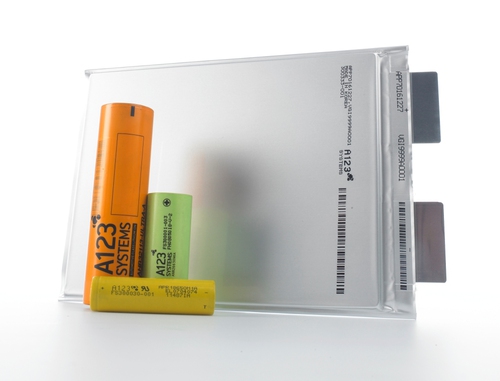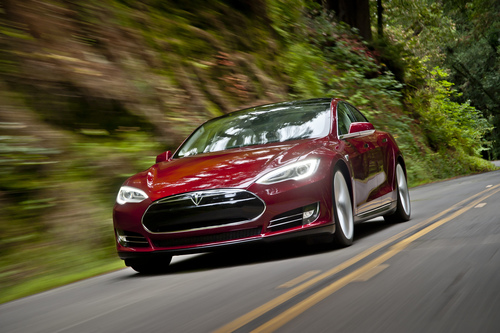Why is Fisker Automotive on the brink of collapse? (reportedly) The news is full of stories today saying that Fisker Automotive is unable to pay its bills, has laid off 75% of its workforce, is being sued by the landlord and the webmaster for lack of payment, that the negotiations for a buyout from other automakers have collapsed, and that the company is seeking bankruptcy. As a proponent of electric vehicles I want to see all the EV companies survive, but in harsh reality each company has to deserve to survive and it wouldn’t do for an EV company to be forced to survive just because it’s an EV company.
At the same time we can contrast Fisker’s failure with Tesla’s great success. Unlike Fisker who is stumbling badly, Tesla is flying high, they’re manufacturing cars, getting rave reviews from the press and from customers, and are about to announce they’ve turned a profit after losing almost $400 million in 2012.
My take is that the company made horrible business mistakes, had an overly-aggressive product development schedule, which they completely failed to deliver on, and that they ran into a series of horrible problems during 2012![]() not all of which were under their control. The Fisker Karma came to market a couple years later than was originally promised, and the initial units had serious bugs. For example the Karma bought by Consumers Union for testing simply died on the test track.
not all of which were under their control. The Fisker Karma came to market a couple years later than was originally promised, and the initial units had serious bugs. For example the Karma bought by Consumers Union for testing simply died on the test track.
The lateness of getting the Karma to market directly resulted in the Dept of Energy freezing loans to Fisker Automotive, setting off a chain of events that made it impossible to get the Atlantic into production last year as promised. That’s left a former GM factory in Delaware sitting idle when it was supposed to have been reawakened with a workforce manufacturing cars.
The problems which were out of their hands is the implosion of A123 Systems. A123 made some manufacturing mistakes, that affected Fisker’s Karma, and which caused expensive recall and warranty replacements that blew a big gaping hole in the middle of A123’s finances. The company eventually went into bankruptcy and was bought out. But the bankruptcy prevented A123 from building any battery packs, preventing Fisker from manufacturing any cars, making a seriously bad financial crisis at Fisker Automotive.
Okay, that’s a business rundown of why Fisker Automotive is failing. What else could be the culprit?
The MIT Technology Review published an interesting take on it – Why Tesla Survived and Fisker Won’t![]() – that boils down to Fisker putting an emphasis on form over function, while Tesla focused on function and quality putting design as a close second.
– that boils down to Fisker putting an emphasis on form over function, while Tesla focused on function and quality putting design as a close second.
Nobody doubts that the Fisker Karma or Atlantic are beautiful cars. The company won several design awards during 2012, and Henrik Fisker is a top car designer.
But does he know anything about automobile manufacturing and quality? The Technology Review article contends he doesn’t, and that the management focus on design beauty meant they skimped on making a good quality car that was reliable and performed as promised.
At Tesla, the team learned about this earlier when the early Roadsters had their own problems. As a result they made sure to deliver a solid reliable car and from what I can tell the customers are ecstatic. Well, most of them. I hear that there are a few problems, a few grumpy mouths among the Tesla owners. But whenever I dip into the Tesla forum I see happy talk, not problem talk.
I rather agree that this focus on design in preference to functionality had a strong effect on the results Fisker Automotive has shown. The inability to meet their business commitments seems likely to be a symptom of focusing on ephemeral things like what a car looks like, and not focusing on practical things like meeting schedules and quality targets.
- Highway design could decrease death and injury risk, if “we” chose smarter designs - March 28, 2015
- GM really did trademark “range anxiety”, only later to abandon that mark - March 25, 2015
- US Government releases new regulations on hydraulic fracturing, that some call “toothless” - March 20, 2015
- Tesla Motors magic pill to solve range anxiety doesn’t quite instill range confidence - March 19, 2015
- Update on Galena IL oil train – 21 cars involved, which were the supposedly safer CP1232 design - March 7, 2015
- Another oil bomb train – why are they shipping crude oil by train? – Symptoms of fossil fuel addiction - March 6, 2015
- Chevron relinquishes fracking in Romania, as part of broader pull-out from Eastern European fracking operations - February 22, 2015
- Answer anti- electric car articles with truth and pride – truth outshines all distortions - February 19, 2015
- Apple taking big risk on developing a car? Please, Apple, don’t go there! - February 16, 2015
- Toyota, Nissan, Honda working on Japanese fuel cell infrastructure for Japanese government - February 12, 2015















